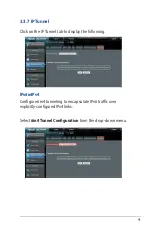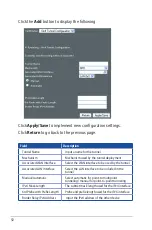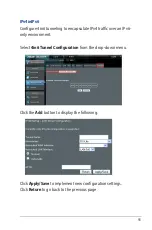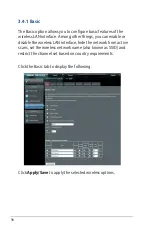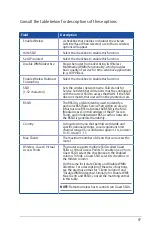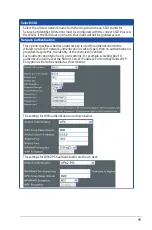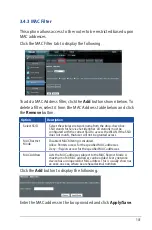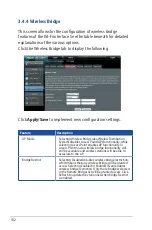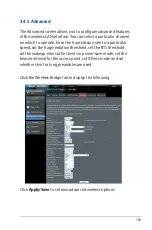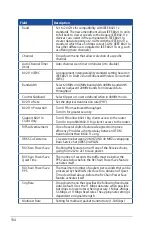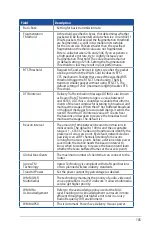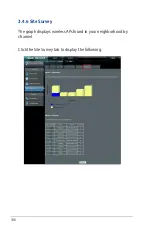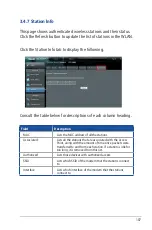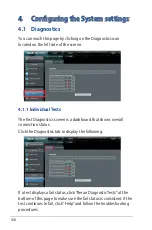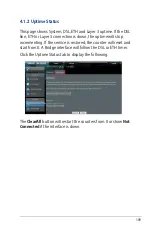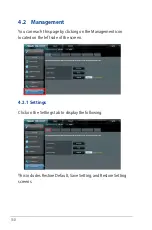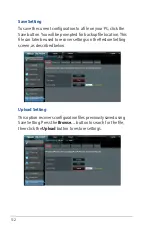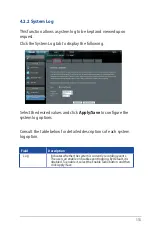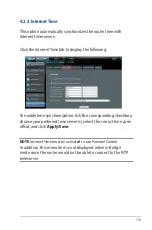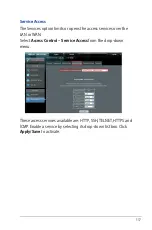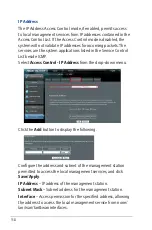
105
Field
Description
Basic Rate
Setting for basic transmission rate.
Fragmentation
Threshold
A threshold, specified in bytes, that determines whether
packets will be fragmented and at what size. On an 802.11
WLAN, packets that exceed the fragmentation threshold
are fragmented, i.e., split into, smaller units suitable
for the circuit size. Packets smaller than the specified
fragmentation threshold value are not fragmented.
Enter a value between 256 and 2346. If you experience
a high packet error rate, try to slightly increase your
Fragmentation Threshold. The value should remain at
its default setting of 2346. Setting the Fragmentation
Threshold too low may result in poor performance.
RTS Threshold
Request to Send, when set in bytes, specifies the packet
size beyond which the WLAN Card invokes its RTS/
CTS mechanism. Packets that exceed the specified RTS
threshold trigger the RTS/CTS mechanism. The NIC
transmits smaller packet without using RTS/CTS. The
default setting of 2347 (maximum length) disables RTS
Threshold.
DTIM Interval
Delivery Traffic Indication Message (DTIM) is also known
as Beacon Rate. The entry range is a value between 1
and 65535. A DTIM is a countdown variable that informs
clients of the next window for listening to broadcast and
multicast messages. When the AP has buffered broadcast
or multicast messages for associated clients, it sends the
next DTIM with a DTIM Interval value. AP Clients hear
the beacons and awaken to receive the broadcast and
multicast messages. The default is 1.
Beacon Interval
The amount of time between beacon transmissions in
milliseconds. The default is 100 ms and the acceptable
range is 1 – 65535. The beacon transmissions identify the
presence of an access point. By default, network devices
passively scan all RF channels listening for beacons
coming from access points. Before a station enters power
save mode, the station needs the beacon interval to
know when to wake up to receive the beacon (and learn
whether there are buffered frames at the access point).
Global Max Clients
The maximum number of clients that can connect to the
router.
Xpress TM
Technology
Xpress Technology is compliant with draft specifications
of two planned wireless industry standards.
Transmit Power
Set the power output (by percentage) as desired.
WMM (Wi-Fi
Multimedia)
The technology maintains the priority of audio, video and
voice applications in a Wi-Fi network. It allows multimedia
service get higher priority.
WMM No
Acknowledgement
Refers to the acknowledge policy used at the MAC
level. Enabling no Acknowledgement can result in more
efficient throughput but higher error rates in a noisy
Radio Frequency (RF) environment.
WMM APSD
This is Automatic Power Save Delivery. It saves power.

